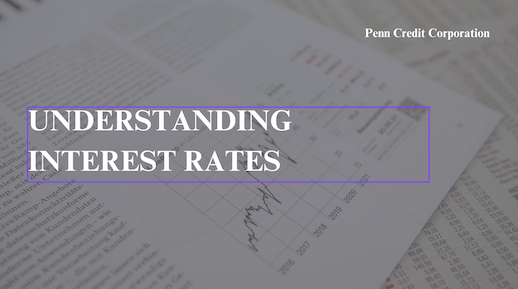Interest rates are the costs of borrowing money or rewards for saving. They are calculated based on the amount borrowed or saved and are expressed as a percentage. When you take out a loan, you are borrowing money from a bank, and the interest rate is typically expressed as an annual percentage rate (APR). This rate is applied to the total unpaid portion of a loan or credit card balance. You need to pay at least the interest in each compounding period, or else the amount of debt will continue to increase despite making payments.
Interest rates also apply to the amount earned at a bank or a credit union from a savings account. When you deposit money into a savings account, the bank borrows this money from you and pays you interest for the use of it. The interest rate is usually referred to as the annual percentage yield (APY).
Interest rates vary from one bank to another. Banks tend to assign a higher interest rate to revolving loans such as credit cards because these are more costly to manage. Moreover, banks usually charge higher rates for people considered risky; the higher the credit score, the lower the interest rate that will be paid.
Fixed vs. Variable Interest Rates
When it comes to loans, banks offer two main types of interest rates – fixed and variable. Fixed interest rates remain the same over the life of the loan, with payments initially consisting mostly of interest payments. As time passes, the amount paid towards the debt principal increases. Most conventional mortgages are fixed-rate loans.
In contrast, variable interest rates fluctuate with the prime rate, meaning that when the rate rises, so does the payment on the loan. The prime rate is based on the federal funds rate, and with either type of loan, borrowers can usually make additional payments towards the principal at any time to help pay off the debt sooner.
How Are Interest Rates Determined?
It is the Federal Reserve that sets the federal funds rate, which acts as the benchmark for short-term interest rates, and this is what banks charge each other for overnight loans. On the other hand, the U.S. Treasury auctions off its bonds, and the demand for those bonds affects the yields of the bonds, which in turn affects the interest rates for long-term bonds such as 15 and 30-year mortgages. If the demand for the Treasurys is high, investors pay more for the bonds, and the yields are lower, resulting in lower interest rates.
Impact of High Versus Low-Interest Rates
Interest rates have a significant impact on the economy. High-interest rates make loans more expensive, thereby reducing the amount of credit that is available to fund purchases, which slows consumer demand and strangles supply. On the other hand, low-interest rates have a stimulating effect on the economy. They make housing more affordable, encourage more spending and investment, and make business loans more affordable, leading to business expansion and job creation. While low-interest rates provide many benefits, they can also lead to inflation if there is too much liquidity in the market. Therefore, the U.S. government and Federal Reserve usually prefer to keep interest rates at a moderate level.
Understanding APR
The annual percentage rate (APR) is a comprehensive measure of the cost of a loan. It takes into account the interest rate, as well as other fees such as one-time points, broker fees, and closing costs. The interest rate tells you how much you have to pay each month, but the APR reveals the total cost of the loan over its lifespan. When comparing different loans, APR is the best way to evaluate the total cost of each. This will help you determine which loan is the better option. Knowing both the interest rate and APR is essential to understand the total cost of a loan and make an informed decision.
Interest rates are an important factor to consider when making financial decisions. The Federal Reserve can influence the economy by raising or lowering interest rates, so it is important to pay attention to their announcements. When interest rates are high, borrowing money becomes more expensive, and people and businesses tend to save more and spend less. This can lead to a decrease in demand and a recession. Conversely, when interest rates are low, people and businesses are more likely to borrow, and economic growth can be stimulated. However, too much borrowing and too little saving can lead to inflation. It is important to consider the interest rate and APR when taking out a loan, choosing a credit card, or investing in stocks or bonds. This can help to reduce the risks associated with these financial decisions.

